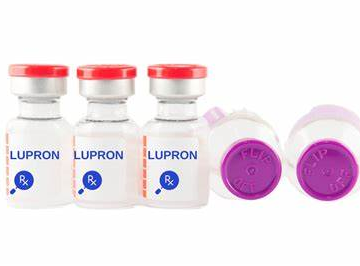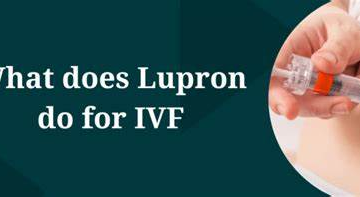
IVF Costs with Blue Cross Blue Shield Insurance: Everything You Need to Know
If you’re thinking about in vitro fertilization (IVF) and wondering how much it’ll cost with Blue Cross Blue Shield (BCBS) insurance, you’re not alone. IVF can feel like a big, scary leap—both emotionally and financially. The good news? Having insurance like BCBS might lighten the load. But here’s the catch: costs can still vary wildly depending on your plan, where you live, and what’s covered. Let’s break it all down so you can feel confident about what to expect, how to plan, and what steps to take next.
This guide is your one-stop shop for understanding IVF costs with BCBS. We’ll cover the basics, dig into hidden expenses, share real-world tips, and even sprinkle in some fresh research to help you save money and stress less. Whether you’re just starting your fertility journey or deep into the process, we’ve got you covered.
What Is IVF and Why Does It Cost So Much?
IVF is a process where doctors help you get pregnant by combining an egg and sperm outside the body, then placing the embryo into the uterus. It’s like giving nature a little nudge when things aren’t working on their own. But why does it come with such a big price tag?
The Core Reasons Behind IVF Costs
-
- Medical Expertise: You’re paying for highly trained doctors, nurses, and lab specialists who handle delicate procedures.
-
- Technology: Fancy equipment like ultrasound machines and embryo incubators isn’t cheap.
-
- Medications: Fertility drugs to boost egg production can cost thousands per cycle.
-
- Multiple Steps: IVF isn’t one-and-done—it involves tests, egg retrieval, fertilization, and embryo transfer, each with its own price.
A single IVF cycle without insurance typically ranges from $12,000 to $20,000, according to the American Society for Reproductive Medicine (ASRM). Add meds, and you could be looking at $15,000 to $25,000. That’s a lot for most families, which is why insurance like BCBS can be a game-changer.
How BCBS Steps In
BCBS isn’t one company—it’s a network of 33 independent plans across the U.S. That means coverage for IVF depends on your specific plan and state. Some plans cover it fully, some partially, and others not at all. Let’s explore how this works.
Does Blue Cross Blue Shield Cover IVF?
The short answer? It depends. BCBS offers a patchwork of coverage, so what you get hinges on your policy details and location. Here’s what you need to know.
The Coverage Basics
As of March 2025, more BCBS plans are adding IVF benefits due to growing demand and state laws. For example:
-
- Federal Employees Health Benefits (FEHB) Plans: If you’re a federal worker with BCBS Standard Option, you might get up to $25,000 per year for IVF, covering three cycles.
-
- State Mandates: States like Illinois, New Jersey, and Massachusetts require insurance to cover IVF, so BCBS plans there often include it.
-
- Employer Plans: Some companies negotiate IVF coverage into their BCBS policies as a perk.
But here’s the kicker: even with coverage, you’re not off the hook for all costs. Deductibles, copays, and limits apply.
What’s Typically Covered (and What’s Not)
✔️ Covered: Diagnostic tests, egg retrieval, fertilization, embryo transfer, some medications.
❌ Not Covered: Donor eggs/sperm, embryo storage, genetic testing (like PGT-A), extra cycles beyond limits.
“Coverage varies so much that it’s like a puzzle—you have to piece it together yourself,” says Orion Nightingale, a fertility insurance expert. “Always check your plan’s fine print.”
Real Example
Let’s say you’re in Illinois with BCBS PPO. State law mandates IVF coverage, so your plan might pay 80% of a $15,000 cycle after a $1,000 deductible. You’d owe $4,000 out-of-pocket—better than $15,000, but still a chunk of change.
Breaking Down IVF Costs with BCBS Insurance
To really get a handle on this, let’s split the costs into pieces and see how BCBS might chip in. Numbers are based on 2025 averages and recent BCBS updates.
1. Initial Consultations and Tests
-
- Cost Without Insurance: $500–$1,500
-
- With BCBS: Often covered at 80%–100% after deductible. Tests like bloodwork or ultrasounds are usually “diagnostic,” so they’re more likely to be included.
Tip: Ask your doctor to code these as “infertility evaluation” to boost coverage chances.
2. Fertility Medications
-
- Cost Without Insurance: $3,000–$7,000 per cycle
-
- With BCBS: Varies widely. Some plans cover 50%–80% after deductible; others cap at a dollar amount (e.g., $5,000). Generic drugs might save you more.
Fun Fact: A 2024 study from Fertility and Sterility found that patients with partial drug coverage still spend $2,000+ out-of-pocket per cycle.
3. The IVF Procedure Itself
-
- Cost Without Insurance: $10,000–$15,000
-
- With BCBS: If covered, expect 50%–100% after deductible, often with a limit (e.g., 3 attempts or $25,000 lifetime max).
4. Extra Services
-
- Embryo Freezing: $1,000–$2,000 upfront, $500/year storage. Rarely covered.
-
- Genetic Testing (PGT-A): $3,000–$5,000. Usually out-of-pocket.
-
- Donor Eggs/Sperm: $5,000–$15,000. Almost never covered.
Sample Cost Table
| Service | Without Insurance | With BCBS (Example Plan*) |
|---|---|---|
| Consultation | $1,000 | $200 (80% covered) |
| Medications | $5,000 | $2,500 (50% covered) |
| IVF Cycle | $12,000 | $3,000 (75% covered) |
| Embryo Freezing | $1,500 | $1,500 (not covered) |
| Total | $19,500 | $7,200 |
| *Assumes $1,000 deductible met, 75% procedure coverage, 50% drug coverage. |
Hidden Costs You Might Miss
Even with BCBS, sneaky expenses can pop up. Here’s what to watch for.
1. Out-of-Network Providers
If your fertility clinic isn’t in BCBS’s network, you might pay 40%–60% instead of 20%. One couple in Florida paid $6,000 extra because their “in-network” doctor used an out-of-network lab, according to a 2022 NPR report.
Fix It: Call BCBS to confirm every provider—clinic, lab, even the anesthesiologist.
2. Pre-Authorization Hassles
Some plans require approval before IVF. If denied, you’re stuck with the full bill. A Reddit user in 2024 shelled out $25,000 after a last-minute denial.
Fix It: Submit paperwork early and follow up weekly.
3. Travel and Time Off
Live far from a clinic? Gas, hotels, and unpaid leave add up. One study estimated $500–$1,000 in extras per cycle.
Fix It: Look for telehealth options or local clinics first.
How to Figure Out Your Exact IVF Costs with BCBS
Feeling overwhelmed? Don’t worry—here’s a step-by-step guide to nail down your numbers.
Step 1: Grab Your Plan Details
-
- Log into your BCBS account or call customer service (number’s on your insurance card).
-
- Ask: “Does my plan cover IVF? What’s the deductible, copay, and coverage limit?”
Step 2: Talk to Your Clinic
-
- Give them your insurance info and ask for a cost estimate with BCBS applied.
-
- Double-check in-network status.
Step 3: Calculate Out-of-Pocket
-
- Add up your deductible, copays, and any uncovered extras (like freezing).
-
- Example: $1,000 deductible + $2,000 copay + $1,500 freezing = $4,500.
Step 4: Plan for Multiple Cycles
-
- Only 30% of IVF cycles result in a live birth for women under 35, per the CDC. Budget for 2–3 tries.
Pro Tip: “Start with a financial counselor at your clinic—they’ll spot gaps in coverage you might miss,” advises Ophelia, a reproductive health advocate.
How State Laws Affect Your BCBS IVF Coverage
Where you live can make or break your IVF budget. Let’s look at how state mandates play a role.
States with IVF Mandates
As of 2025, 21 states plus D.C. have fertility coverage laws. Examples:
-
- Illinois: Requires BCBS to cover IVF like any medical condition—up to 3 cycles.
-
- New Jersey: Mandates coverage for 2 cycles, including meds.
-
- Hawaii: Offers some of the best IVF benefits nationwide.
States Without Mandates
No law? Coverage depends on your employer or plan type. In Texas or Florida, BCBS might not cover IVF unless your job negotiated it.
Check Your State
Search “infertility insurance laws [your state]” or call BCBS to confirm. A 2024 RESOLVE report found mandated states cut out-of-pocket costs by 40% on average.
Tips to Lower Your IVF Costs with BCBS
You don’t have to break the bank. Here are practical ways to save.
1. Maximize Your Coverage
-
- Use In-Network Providers: Saves you 20%–40% per service.
-
- Appeal Denials: Clinics often help fight for coverage—success rates are 30%–50%, per a 2023 study.
-
- Split Billing: Ask your clinic to bill meds separately if your plan covers drugs better.
2. Shop Smart for Meds
-
- Go Generic: Progesterone injections might cost $50 vs. $200 for brand-name.
-
- Pharmacy Discounts: Programs like GoodRx can cut costs by 20%–50%.
-
- Fertility Grants: Groups like BabyQuest offer $5,000–$15,000.
3. Tax Breaks and Financing
-
- Medical Deductions: Spend over 7.5% of your income on IVF? Claim it on taxes.
-
- Loans: Prosper Healthcare Lending offers IVF-specific plans with low interest.
4. Timing Matters
-
- Start early in the year to max out annual benefits (e.g., FEHB’s $25,000 resets January 1).
What’s New in 2025 for BCBS IVF Coverage?
Things are changing fast. Here’s the latest scoop.
Expanded FEHB Benefits
Federal workers with BCBS Standard now get $25,000/year for IVF—up from spotty coverage in prior years. A 2024 Federal News Network report called it “monumental.”
Employer Push
More companies are adding IVF to BCBS plans. A 2025 Forbes survey found 75% of employees value fertility benefits, pushing employers to act.
Research Insight
A 2024 study in the Journal of Assisted Reproduction showed insured IVF patients transfer fewer embryos, lowering risky multiple births and long-term costs. BCBS is taking note.
Real Stories: IVF with BCBS
Let’s hear from people who’ve been there.
Sarah’s Story (Illinois)
“I had BCBS PPO. They covered 80% of my $18,000 cycle after a $1,500 deductible. Meds were half-covered, so I paid $3,000 out-of-pocket. It took two cycles, but now I’ve got twins!”
Mike’s Struggle (Texas)
“My BCBS plan didn’t cover IVF—no state law here. We paid $22,000 total. Wish I’d known about grants sooner.”
Takeaway
Coverage can be a lifeline or a letdown. Your story depends on your plan and persistence.
Common Questions About IVF Costs with BCBS
Got questions? We’ve got answers.
Q: Does BCBS cover IVF meds fully?
A: Rarely. Most plans cover 50%–80% after deductible, with caps. Check your drug formulary online.
Q: What if I need more than 3 cycles?
A: You’ll pay full price after hitting limits. Save embryos from early cycles to cut future costs.
Q: Can I switch BCBS plans for better IVF coverage?
A: Yes, during open enrollment (usually November–December). Compare plans on bcbs.com.
Beyond Costs: Emotional and Practical Support
IVF isn’t just about money—it’s a rollercoaster. Here’s how to stay grounded.
Emotional Tips
-
- Join a Group: Online forums like Reddit’s r/infertility offer support.
-
- Talk It Out: Therapy can ease stress—some BCBS plans cover it.
Practical Hacks
-
- Batch Appointments: Schedule tests on one day to save travel.
-
- Ask for Samples: Clinics sometimes have free drug samples.
“Coping with IVF is as much about mental strength as financial planning,” says Caspian Sterling, a fertility psychologist. “Build a support net early.”
The Bigger Picture: Is IVF with BCBS Worth It?
Let’s zoom out. IVF with BCBS can slash costs from $20,000 to $5,000–$10,000 per cycle if you’ve got coverage. But it’s not free, and gaps like embryo storage or donor eggs can sting. Worth it? If it gets you a baby, most say yes. A 2024 survey found 85% of IVF parents would do it again, insured or not.
Weighing Your Options
-
- Pros: Lower costs, expert care, peace of mind.
-
- Cons: Limits, paperwork, surprise bills.
Let’s Chat: What’s Your IVF Plan?
We’ve covered a lot—costs, coverage, tips, and more. Now it’s your turn. What’s your next step? Drop a comment below:
-
- Are you checking your BCBS plan?
-
- Got a cost-saving trick to share?
-
- Just need to vent about the process?
Your story could help someone else. Let’s keep this conversation going!



